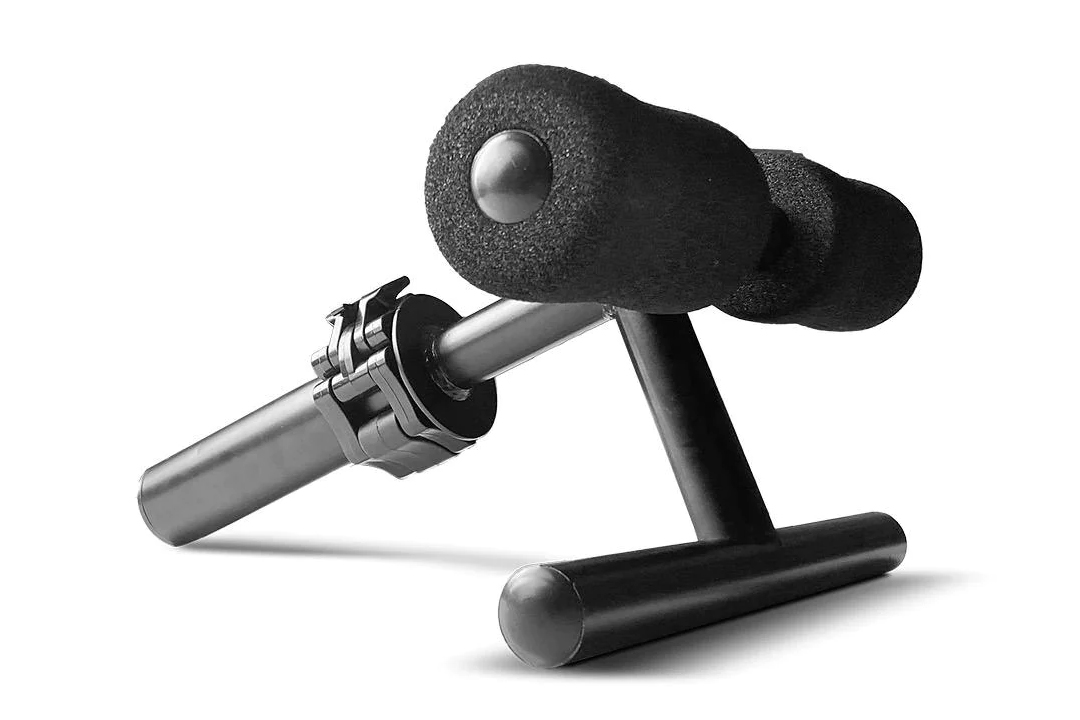
Understanding the Tib Bar
The tib bar, also known as the tibialis bar, is a specially designed piece of equipment that focuses on strengthening the muscles in the lower leg. It consists of a long bar with handles and a weighted resistance system. The tib bar allows for targeted exercises that engage the muscles responsible for ankle dorsiflexion and plantar flexion.
Anatomy of the Lower Leg Muscles
Before diving into the specific muscles targeted by the tib bar, let’s briefly examine the anatomy of the lower leg. The lower leg consists of two primary muscle groups: the anterior compartment and the posterior compartment. The anterior compartment includes the tibialis anterior, extensor digitorum longus, extensor hallucis longus, and fibularis tertius muscles. The posterior compartment comprises the gastrocnemius, soleus, plantaris, popliteus, tibialis posterior, flexor digitorum longus, and flexor hallucis longus muscles. These muscles work together to provide stability, movement, and support to the lower leg and foot.
Muscles Targeted by the Tib Bar:
- Tibialis Anterior: The tib bar primarily targets the tibialis anterior, which is located in the front of the lower leg. This muscle plays a vital role in ankle dorsiflexion, the movement that brings your toes toward your shins. By using the tib bar, you engage and strengthen the tibialis anterior, leading to improved stability and control during activities that involve ankle movement.
- The Gastrocnemius and Soleus: The tib bar exercises also engage the calf muscles, including the gastrocnemius and soleus. These muscles are responsible for ankle plantar flexion, which occurs when you point your toes downward. By performing exercises like calf raises or plantar flexion with the tib bar, you can strengthen these muscles and improve lower leg stability.
- Peroneal Muscles: The peroneal muscles, located on the outside of the lower leg, are also activated during tib bar exercises. These muscles play a crucial role in ankle stability, particularly during lateral movements. Strengthening the peroneal muscles can help prevent ankle sprains and improve overall lower leg stability.
Three Exercises You Can Do With a Tib Bar
To target the muscles mentioned above, here are a few sample tib bar exercises you can incorporate into your workout routine:
- Tib Raises: Tib raises are a fundamental exercise that targets the tibialis anterior muscle, which is located on the front of the shin. To perform this exercise, stand with your toes on the tib bar and slowly raise your heels as high as possible, focusing on engaging the tibialis anterior. Hold the raised position for a few seconds, then lower your heels back down. Aim for 3 sets of 12-15 repetitions.
- Tib Curls: Tib curls are another effective exercise that primarily targets the tibialis anterior. Start by sitting on a bench with the tib bar resting on top of your feet. Flex your toes downwards against the resistance of the bar, contracting the tibialis anterior. Hold the flexed position for a moment, then release and repeat. Perform 3 sets of 10-12 repetitions.
- Tib Circles: Tib circles are a dynamic exercise that engage the tibialis anterior as well as the ankle stabilizer muscles. Begin by placing the tib bar on the floor. Stand on one foot and use your toes to trace circles on the bar, rotating in both clockwise and counterclockwise directions. This exercise challenges the tibialis anterior and enhances ankle stability. Perform 2 sets of 8-10 circles in each direction on each foot.
- Tib Hops: Tib hops are an advanced exercise that incorporates plyometric movements to further strengthen the lower leg muscles. Start in a standing position with the tib bar placed horizontally on the floor. Hop back and forth over the bar, focusing on landing softly and engaging the tibialis anterior and other lower leg muscles. Perform 3 sets of 10-12 hops.
- Single-Leg Balance with Tib Bar: This exercise combines balance training with tib bar engagement. Stand on one foot while holding the tib bar vertically with both hands, allowing it to act as a stabilizing tool. Maintain your balance for as long as possible, focusing on engaging the tibialis anterior and other ankle stabilizer muscles. Switch to the other leg and repeat. Aim for 3 sets of 30-60 seconds on each leg.
Benefits of Tib Bar Exercises:
- Enhanced Lower Leg Strength: Tib bar exercises specifically target the muscles in the lower leg, leading to improved strength and endurance in the tibialis anterior, gastrocnemius, soleus, and peroneal muscles. Strengthening these muscles can benefit athletes, runners, and individuals seeking to improve lower leg strength for various activities.
- Improved Balance and Stability: By targeting the muscles responsible for ankle dorsiflexion and plantar flexion, tib bar exercises help improve balance and stability. This can be especially beneficial for activities that require balance, such as yoga, dancing, or sports.
- Injury Prevention: Strengthening the muscles in the lower leg through tib bar exercises can help prevent common lower leg injuries, such as shin splints and ankle sprains. Stronger muscles provide better support and stability to the ankle joint, reducing the risk of injury during physical activities.
- Rehabilitation and Recovery: The tib bar can also be used as part of a rehabilitation program for individuals recovering from lower leg injuries. It provides a controlled and targeted method of strengthening the muscles, aiding in the recovery process and helping to restore full functionality.
Finally, the tib bar is a valuable tool for targeting and strengthening the muscles in the lower leg. By incorporating tib bar exercises into your workout routine, you can improve lower leg strength, enhance balance and stability, prevent injuries, and aid in rehabilitation and recovery. Whether you’re an athlete, fitness enthusiast, or simply looking to improve lower leg strength, the tib bar offers a focused and effective approach to lower body training. Embrace the benefits of tib bar exercises and unleash the full potential of your lower legs.
Comments
comments